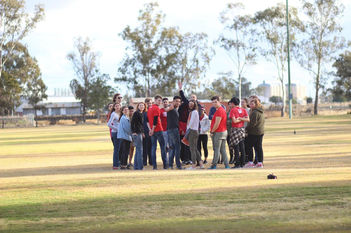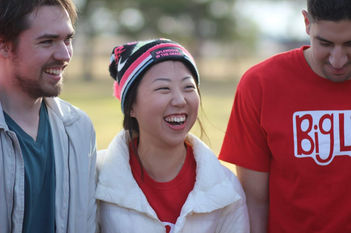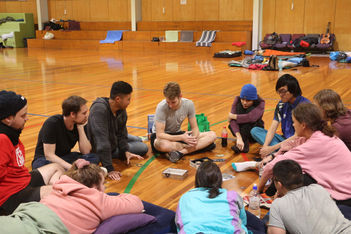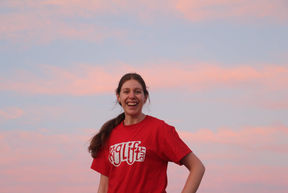
MID YEAR TRIP
2019
Scroll Down
This year, we were fortunate enough to revisit the communities of Dalby, Injune, and Chinchilla during an amazing 7 day trip from June 28 - July 3. We also added a new community to the trip with projects in Jandowae. We had the opportunities to re-connect with some familiar faces and places and also expand our connections to encompass more members and associations within these communities.
As always, each town provided us with unique experiences and unique learning opportunities. Service learning trips such as this offer the incredible chance to learn from others - those in the communities and our fellow Big Lifters. We thoroughly appreciated the insights we gained into aspects of regional and rural life and what makes living out West so special for so many.

Dalby
The traditional owners of the land are the Barunggam people. Dalby is a 13,000 strong town situated 2.5 hours northwest of Brisbane at the crossroad to three major highways, making it the gateway to Western Queensland and to the rest of Australia by road. As a result, you’ll find many a regional traveler visiting the Dalby Maccas, stopping off at the last fast food outlet for 1,617km (Mt Isa). While Dalby has always been known for its strong community vibe, this has become more prominent in recent years with new festivals and events added to the Dalby calendar that have brought in people from around the region and showcased everything Dalby has to offer.
Myall Creek runs through the middle of Dalby and provides some beautiful green space for the community to enjoy. At its heart, Dalby is a farming town; with tourists able to visit cotton gins, feedlots and the surrounding landscape is dotted with grain silos and windmills. Around Dalby, cotton, wheat, sorghum and chickpea crops border coalmines and power stations.
Dalby - Day 1
We set off bright and early and full of excitement on Day 1 and made our way to our first community - Dalby. On the way we were able to have the chance to get to know one another, and stop at the beautiful Toowoomba Picnic Point for lunch.
After lunch, we arrived at Dalby, and some of us headed out to our first project - helping make paper lanterns for this years Delicious and Delightful Festival! We thoroughly enjoyed helping make a number of lanterns which included The Big Ben, The Parthenon, Geisha Girl, Hat & Boots, Qantas Plane, Sydney Opera House, a Hot Air Balloon, an Igloo, an African rhino, an Indian tiger, the Sphinx, Babushka Doll, Buddha, a Blimp and Statue of Libery, a volcano and more.
Dalby - Day 2
On our second day in Dalby, we had opportunities to engage in a number of volunteer projects. This included gardening and cleaning at the Pioneer Park Museum. The museum was a big project and this winter the whole area was covered in tumbleweeds so we went through and collect them all and burned them. During the day we were all lucky enough to view the varying exhibits at the Pioneer Park Museum which showcase history in Dalby and a variety of artefacts which give interesting insights into the past. The wonderful caretakers of the Museum telling us stories from the area and making us all feel so welcome.
We also continued with preparations for Dalby's Delicious and DeLIGHTful Festival. We were tasked with building the structure of some Lanterns with Bamboo poles as well as applying multiple Layers of Paper Mache to the BIG Lanterns for the parade. We completed a large majority of the Lanterns which we later found out if we hadn't helped there is only one lady who Paper Maches all of the lanterns!
After a long day of projects, we were fortunate to engage in discussions and reflect on our work, our presence within the community and the conversations that we had held during the day. This service learning approach is a large part of what Big Lift is all about and it is so wonderful to be able to be part of a group that values both our individual and collective development over the course of the trip.

 67658077_1744361225707257_2155500410616414208_o |  67583727_1744355039041209_4446635347274629120_o |  67386704_1744359152374131_8003996844034097152_o |
|---|---|---|
 IMG_2830 |  IMG_2827 |  IMG_2820 |
 67343048-1744360219040691-5337296403506921472-o |  67293557-1744360512373995-8130019375001370624-o |  67262786-1744361632373883-7661683715705143296-o |
 67275542-1744360615707318-3748752549503565824-o |  67236395-1744357249040988-5085646354009554944-o |  67057985-1744357875707592-2645974745127845888-o |
 67167874-1744361139040599-4567474368111706112-o |  67051396-1744361712373875-8037044474188136448-o |
Jandowae
The traditional owners of this land are also the Barunggam people. The name comes from the word Jindowie, meaning waterhole. Jandowae has a population of around 1200 people and is one of Queensland’s largest wheat growing areas. Every second year is the Jandowae Timbertown festival which recognizes and celebrates contributions that the timber industry has made to Jandowae. This attracts 3000 to 4000 people to the town.
Dalby to Jandowae Injune - Day 3
Back on the road we made a quick stop over in Jandowae and Yuleba for more projects and fun. One of the projects included assisting at a mentally disabled persons home and cleaning. After we arrived in Injune and we had some organised games, dinner and a movie night with the Injune Community.
 IMG_3135 |  IMG_3101 |  IMG_3131 |
|---|---|---|
 IMG_3126 |  IMG_3091 |  IMG_3054 |
 IMG_3087 |  IMG_3044 |  IMG_3041 |
 IMG_3040 |  IMG_3017 |  IMG_3034 |
 IMG_3014 |
Injune
The traditional owners of this land are the Gungabulla people. Nestled in the quiet bushlands of South-Western Queensland, Injune is a thriving town with a population of approximately 450 people. Traditionally, beef cattle production has been a staple industry of the town. Most recently, oil and gas production have become important; Injune has become a major base, pumping supplies all around the state. Residents of Injune have a lively interest in the arts. The Injune Public Space Art Group is the town’s local arts group and it leads the development of Henricks Park just opposite the Injune Information Centre. The intriguing history of this quaint country town can be seen in some of the art displayed in Henricks Park. There is also easy access to four Scenic National Parks from Injune including: Mt Moffatt, Carnarvon Gorge, Lonesome and Beilba.
Injune - Day 4
We had a big day of projects which included:
-
Spring clean of the old railway station building
-
Youth Group Building cleaning
-
Retirement Village
-
Helping out and doing some gardening in the community garden
-
Injune state school:
-
Lawn Bowls night another BBQ
-
Rodeo Club assistance
Roma
The traditional owners of this land are the Mandandanji people. With a population of just under 7000 people, Roma lies at the crossroads of the Warrego Highway, Great Inland Way and Carnarvon Development Road. Known for gas and oil production, Roma is also home to Australia’s largest cattle sales, held every Tuesday and Thursday at the Roma Sale yards. Tourists are always welcome to come along and experience the unique atmosphere of a true outback experience, something not always included in the traveler’s itinerary.
Injune to Roma to Chinchilla - Day 5
The Big Lifters got up bright and early to get to Roma where we got a tour at the Big Rig and did some grocery shopping and had a local lunch. The for the rest of the day we headed to our final project town, Chinchilla and had free time.






























Chinchilla
The traditional owners of the land are the Barunggam people. Situated in the Darling Downs region of Queensland 300km from Brisbane, Chinchilla is a town with a population of under 6000. It was established in 1877 along the banks of Charley’s Creek, the result of a railway that was pushing west from Toowoomba and Dalby. Agriculture is important to the town, although a boom of resources has resulted in many coal and gas companies injecting money into the town, resulting in growth and development. Affectionately known as the “Melon Capital of Australia”, Chinchilla hosts the Melon Festival: a day full of fun and fruity activities held once every two years that attracts thousands from all around Queensland and beyond. The next festival is due to be held in 2021.
Chinchilla - Day 6
Today we had another big day filled with over 11 different projects which included:
-
Historical museum for some cleaning,
-
gardening
-
Cleaning
-
Spending time with children and cleaning
-
Lifting/ moving
-
Helping out with a camera program
-
Helping out at the Men's Shed
Then at night we had some discussions and community talks at Cameby Hall.

Chinchilla to Brisbane - Day 7
The last day is simply summarised as pack up & cleanup ☺ then some service learning and lunch at Toowoomba... home, bed, sleep.
 IMG_4145 |  IMG_4110 |  IMG_3905 |
|---|---|---|
 IMG_3902 |  IMG_3899 |  IMG_3895 |
 IMG_3893 |  IMG_3881 |  IMG_3855 |
 IMG_3817 |  IMG_3806 |  IMG_3805 |
 IMG_3799 |  IMG_3784 |  IMG_3714 |
 IMG_3733 |











































